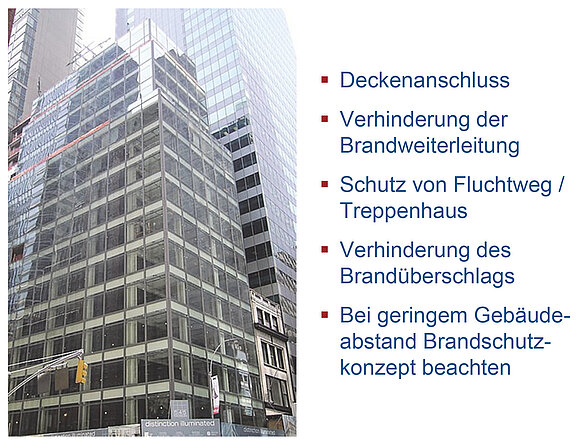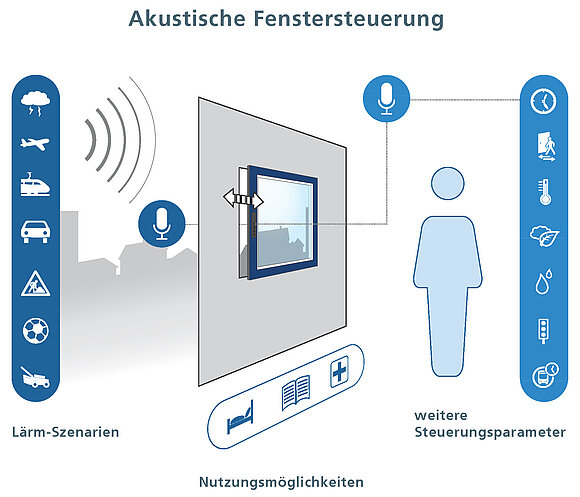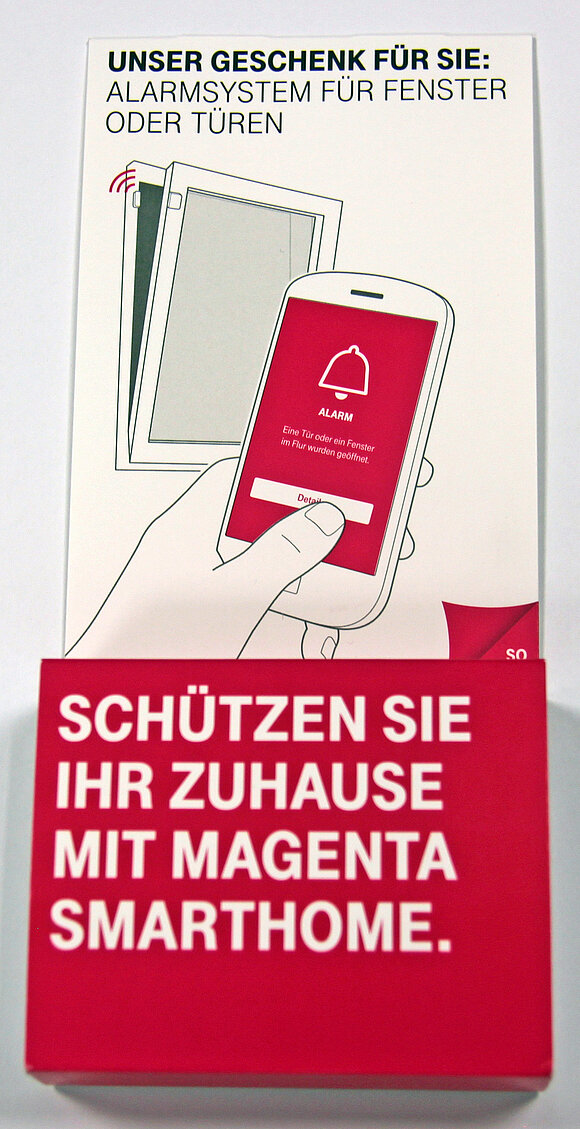Reading time: 1 minute
In order to be able to master the future, the issue at hand is: What do we, as an industry, have to deal with in the future?
In other words, what are the mega trends in window construction?
- Digitalisation
- Globalisation
- Transparent construction
- Highly efficient construction
- Urbanisation
- Climate change
- Social change
- Refugee migrations
Some of these trends oblige us. Others, in turn, pose great challenges to us in our day-to-day work. This is where digitalisation will definitely bring greater value addition, and a better image and new functions for building components. The same is true for globalisation: New markets with good business that put special emphasis on windows and facades from Germany.
Anti-trends such as the high pressure of import and price dumping, increasingly larger glass surfaces of transparent construction, weights and sizes, but also some challenges pertaining to building physics due to energy-efficient and thermal bridge-optimised sealed construction or the lack of opportunities for smaller companies to implement research projects thwart these trends. And in general discussions, there are always other matters that come up: Such as in Spiegel (2/2017) the matter of "Bird safety" – the window to death", or, on environmental issues, an ad-hoc notification such as "Asbestos in glazing containing putty" and the associated issue of window disposal.

However, challenges are also helpful and accelerate business. Of course, this also includes climate change and with it, the associated discussion on energy-related characteristic data or the European harmonisation, which has favoured new functionalities of the products considerably as well as the residential demand associated with the migration, but also issues such as sustainability and digitalisation.

There are also developments and trends that cannot be completely tackled at present such as the size of the products and the associated weights, the trend towards darker colours and accordingly high surface heating and deformations. But even matters pertaining to building physics are included here resulting from changed construction such as leak-tightness, release of excess pressure or ventilation concepts.
All size restrictions still offer good orientation even today (see e.g. extract from DIN 6812 dated 1990). You may, of course, even use these dimensions. However, in this case, restrictions on the use should be communicated to the building owners.
Even issues of fire safety are gaining in importance caused by congestion of residential spaces (keyword: boundary distance), change in use and greater risks of fire. How fatal errors here may turn out to be is demonstrated by disasters such as the high-rise building fire in London on 14 June


The Model Building Code (MBO) prescribes, among others, that firewalls have to prevent the spread of fire to another building or fire compartments long enough – generally for 90 minutes – as space-enclosing building components for integrity of buildings (building separating wall) or for dividing buildings in fire compartments (interior fire wall). With a few exceptions, they are necessary as building separating walls, if these separating walls are erected at the boundary of the plot of land or with a distance of less than 2.50 m from it, unless a distance of at least 5 m is assured to existing buildings or those permissible in future in accordance with the regulations under building law.
Keep it simple
Experience and discussion establish that construction in Germany can no longer follow the complex trends since a long time. This not only includes the delays in our prestigious structures such as the Berlin Airport or the Elbe Philharmonic Hall (Elbphilharmonie), but also, for example, damage to the structure at the Federal Chancellery. There is often a lack of qualified expert planners, as well as a lack of timely expert planning and the necessary simple solutions with which the craftsmen can cope on-site.
The practice demonstrated recently in a TV report in energy consulting should get the industry and the supporters to contemplate: As energy consultants qualified and listed sellers have primarily tried to sell their products such as thermal insulating composite systems, heating systems, solar systems etc. A coherent and "meaningful" concept for the consumers was unfortunately the exception.
There were similar shortcomings identified in the field of ventilation planning, electrical planning in conjunction with building automation, in fire safety planning and much more. There was total silence not only on the necessary detailed planning of our products itself, but also on their integration in the structures. Questions such as the following are unfortunately asked very rarely:
- "What does the correct solution for fixing a two-winged window in the lintel beam area with refurbished roller shutters look like?"
- "How do we deal with dark surfaces and deformations with anthracite coloured, dark windows?"
- "Are you aware of the technical limits and, above all, does your dealer know them, who primarily provides advice for your products and sells them?"
- "What does professional sealing in the lower window fitting attachment on the room side look like during refurbishment?"
- "How do I get this darned coupling profile attached and sealed off professionally to the wall in practice?"
This list can go on endlessly. Particularly sensitive and tricky issues such as cable routing and integration of electrical components – perhaps, even the professional penetration of the necessary airtight seal – are not addressed in the process. In fact, what is needed urgently, in order to stop this development, is consistent formulation of other standardised, simple solutions.
However, a number of things have already been launched such as e.g. self-adhesive films for sealing joints, pressure-equalised IGU (insulated glazing units), operating support for fitting parts, pasty film seals, spacer screws, frame solutions for installation on the front wall, composite windows with integrated sunshade or roller shutter box systems in the front of the building for refurbishment.
The necessary widening of the expert knowledge, also with dealers and sellers, substantially improved qualification of the expert planers and a simplification of our systems so that the practitioners can deal with them from another step.
It all depends on correct planning!
The tendering practice followed today, no longer matches the performance capability of the products since a long time. Sample texts are used with drag & drop as they were 20 years ago, which can lead to multiple errors and misunderstandings.
Seen at present, the problem is an increasing number of errors in the tendering of special requirements such as those for burglary-resistant elements. For fear of potential claims, text pieces are used in offers and order confirmations such as: "… design of the windows with RC2 fittings." This awakens the impression with the customer that he has ordered a burglary-resistant window according to the standards. However, what he often gets delivered is a window with an improved fittings configuration without the customary necessary measures such as the compression resisting packing near the assembly and glass connection, the safeguard for the glazing and much more, which is absolutely necessary for burglary-resistant elements. Appropriate consulting often does not take place. This practice is definitely based on the uncertainty in dealing with the subject of "burglary resistance", especially for the subject of connecting the burglary-resistant building components to the brickwork, but also for the provision of more complex building components, barrier-free sill and more.
Even the neighbouring construction trades must be adapted to the current requirements. For highly thermally insulating brickwork, the window reveal brick and the skim coating are also the prerequisite for the implementation of all requirements for professional and proper connection. Without correct and proper detailed planning and construction supervision, modern building envelopes cannot be created completely.
The presentations of this Window & Facade Conference as well as findings from the research project "Fixing burglary-resistant building components in highly thermally insulation brick masonry" demonstrate that these matters can definitely be resolved. For example, as a rule of thumb for structural dimensioning of the fixing material according to the code of practice for planning and executing the installation of windows and entrance doors even with burglary-resistant building components there are no problems if the fixing distances are chosen to be approximately 40 cm for RC2 and approximately 20 cm for RC3.
Digitalisation is forging ahead inevitably. With or without us.
The sensor systems necessary are becoming increasingly affordable. The power supply is often being provided with the help of solar technology. The options of products in the industry regarding new functions seem to be unlimited. The intelligent building component that reacts to environmental influences, which displays the maintenance necessary, but can also be used as a digital projection surface, is definitely the future.
If you let door automation, i.e. intelligent fitting parts such as motorised locks, closures and drives be installed outside, then there will be a considerable lack of integrated, simple and cost-effective solutions in the windows segment. You may imagine at this juncture that for electrical windows of a car, the drive is plugged on the old crank handle unit in order to lift the glass pane in this manner. This is a less practicable, inelegant and far too cost-intensive solution, which, in addition, offers too little convenience or comfort. Industrial gates, garage gates, sunshade equipment and solar shading demonstrate the capacity of integrated solutions.
As an example of opportunities in the future, you can already imagine with the technology of the present that the window identifies the train movement before the sleeping user and closes at the right time.


Acceptance of smart homes by the user
Of course, you may ask the question whether smart homes are desirable at all. Whether they pose an opportunity or a risk. If we ask ourselves, who would like to have the window in the bedroom or drawing room operated automatically, the answer can be given easily and perhaps, it becomes clear quickly with the help of a simple example: The discussion of burglary is on everyone's lips these days. Imagine how hardened a burglar would have to be if, electronically controlled, based on a signal of the opening and motion detector integrated in the window, just in the moment that he would like to break in, the roller shutters move and the entrance door announces a visitor by ringing the bell.
The next generation of building owners will simply like to have these features. Not to mention the options of additional services such as maintenance, development of the products depending on the user data, energy savings by optimising light incidence and solar radiation and much more. Companies that do not adapt to this will have lost the basis of their existence in a few years.
Multi-functional and unlimited
Windows replace facades; doors become gates; external pedestrian doors become interior doors; lift doors become entrance doors – the application of the products grows and merges and offers additional options of filling large areas in the wall. Already today, you can find requirements for doors up to 3.8 metres high, designed as fire safety doors and additionally with burglary-resistant properties. In the process, you must be clear about the requirements to be specified for these products. Large products with correspondingly large weights of the wings cause safety risk in the utilisation due to their mass.
You can then quickly arrive at the definition of the gates that specifies relevant requirements for the safety of using hand-operated or power-operated gates. The situation is similar if the window becomes a wall-replacing and large-sized building component, and a closure of the building envelope, which means it becomes a facade. Even then, there are other requirements for the leak-tightness of the elements, but also with respect to the necessary verifications, e.g. the structural calculation and load-bearing capacity.

Changes in the production
The factory of the future will manage its inventory on its own, will optimise and organise the driving routes with self-driving hoisting equipment, will be controlled directly by the planning software and will enable small and separate batch sizes. Thanks to networking and the Internet in planning and production, innovations are available on demand. Industry 4.0 and the digital world are already confronting us today in every production facility. The opportunities must be utilised consistently, in order to be able to score as a high wages country such as Germany, with high quality standards and unique customer requirements, against low-cost mass production facilities. This is where we, at ift Rosenheim, with our tools such as the CE generator for online performance verification and installation planner for simplifying the installation planning process, offer our contribution for the future.


